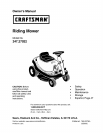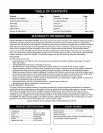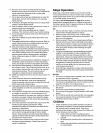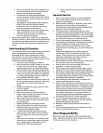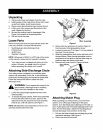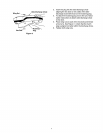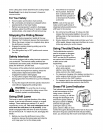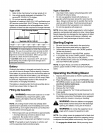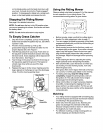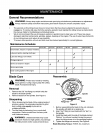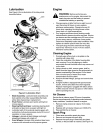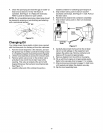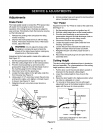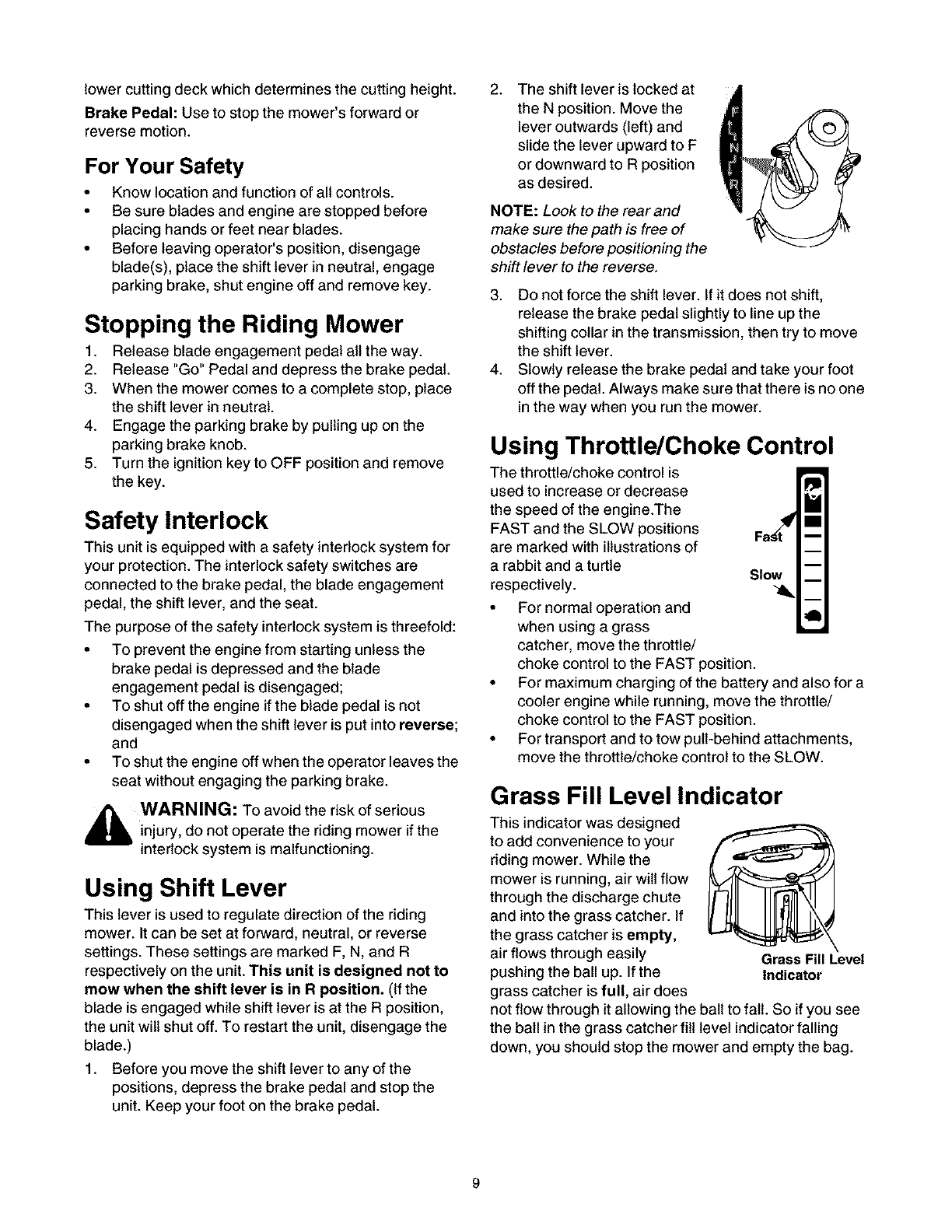
lowercuttingdeckwhichdeterminesthecuttingheight.
BrakePedal:Usetostopthemower'sforwardor
reversemotion.
For Your Safety
• Know location and function of all controls.
• Be sure blades and engine are stopped before
placing hands or feet near blades.
• Before leaving operator's position, disengage
blade(s), place the shift lever in neutral, engage
parking brake, shut engine off and remove key.
Stopping the Riding Mower
1. Release blade engagement pedal all the way.
2. Release "Go" Pedal and depress the brake pedal.
3. When the mower comes to a complete stop, place
the shift lever in neutral.
4. Engage the parking brake by pulling up on the
parking brake knob.
5. Turn the ignition key to OFF position and remove
the key.
Safety Interlock
This unit isequipped with a safety interlock system for
your protection. The interlock safety switches are
connected to the brake pedal, the blade engagement
pedal, the shift lever, and the seat.
The purpose of the safety interlock system is threefold:
• To prevent the engine from starting unless the
brake pedal is depressed and the blade
engagement pedal is disengaged;
• To shut off the engine if the blade pedal is not
disengaged when the shift lever is put into reverse;
and
• To shut the engine off when the operator leaves the
seat without engaging the parking brake.
,_ WARNING: TOavoid the risk of serious
injury, do not operate the riding mower ifthe
interlock system is malfunctioning.
Using Shift Lever
This lever is used to regulate direction of the riding
mower. It can be set at forward, neutral, or reverse
settings. These settings are marked F, N, and R
respectively on the unit. This unit is designed not to
mow when the shift lever is in B position. (If the
blade is engaged while shift lever is at the R position,
the unit wilt shut off. To restart the unit, disengage the
blade.)
1. Before you move the shift lever to any of the
positions, depress the brake pedal and stop the
unit. Keep your foot on the brake pedal.
2. The shift lever is locked at
the N position. Move the
lever outwards (left) and
slide the lever upward to F
or downward to R position
as desired.
NOTE: Look to the rear and
make sure the path is free of
obstacles before positioning the
shift/ever to the reverse.
3. Do not force the shift lever. If it does not shift,
release the brake pedal slightly to line up the
shifting collar in the transmission, then try to move
the shift lever.
4. Slowly release the brake pedal and take your foot
off the pedal. Always make sure that there is no one
in the way when you run the mower.
Using Throttle/Choke Control
The throttle/choke control is I___
used to increase or decrease
the speed of the engine.The
FAST and the SLOW positions
are marked with illustrations of
a rabbit and a turtle
respectively.
• For normal operation and
when using a grass
catcher, move the throttle/
choke control to the FAST position.
• For maximum charging of the battery and also for a
cooler engine while running, move the throttle/
choke control to the FAST position.
• For transport and to tow pull-behind attachments,
move the throttle/choke control to the SLOW.
Grass Fill Level Indicator
This indicator was designed
to add convenience to your
riding mower. While the
mower is running, air will flow
through the discharge chute
and into the grass catcher. If
the grass catcher is empty,
air flows through easily
pushing the ball up. If the
grass catcher is full, air does
Grass Fill Level
Indicator
not flow through it allowing the ball to fall. So if you see
the ball in the grass catcher fill level indicator falling
down, you should stop the mower and empty the bag.



